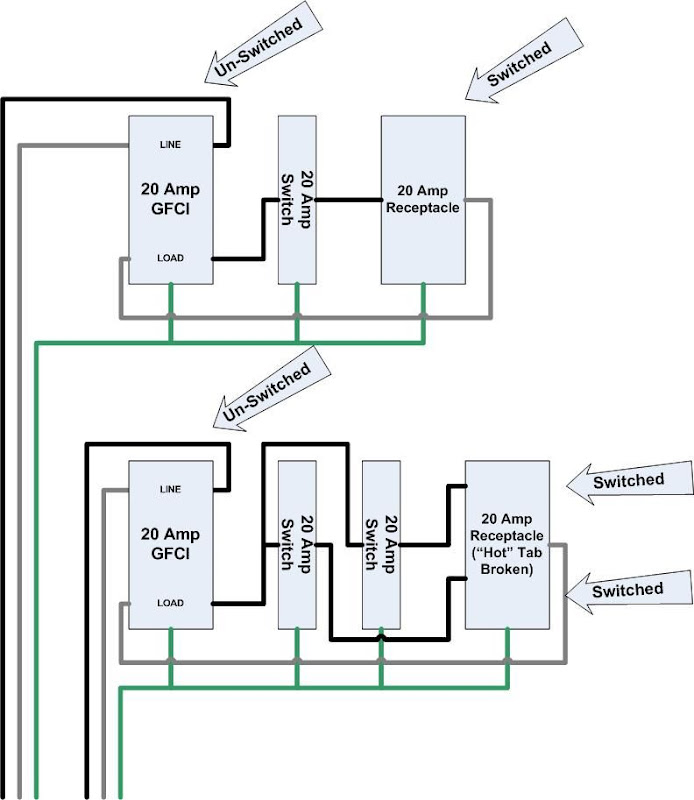Cpt_Kirks
Well-Known Member
I use two 20A 120v circuits for my brewing. Currently, I have a 20A extension cord I made for each. Each cord has a 20A GFCI and 20A switch to control it.
Last weekend, I built a basic single tier wooden brewstand. Now, I'm thinking of taking my extension cords apart and building them into the stand.
One circuit I'm going to leave alone. It will be a 20A GFCI with a simple switch, same as I have now. That one will be for a heatstick only.
The other circuit I want to split. There will be a 20A GFCI with switch, and a 15A GFCI with switch. The 20A will be for a heatstick, the 15A will be for a pump. The 20A and 15A sub circuits will not be in use at the same time.
What will be the best way to wire the 15A and 20A GFCI's to the single input wire?

Last weekend, I built a basic single tier wooden brewstand. Now, I'm thinking of taking my extension cords apart and building them into the stand.
One circuit I'm going to leave alone. It will be a 20A GFCI with a simple switch, same as I have now. That one will be for a heatstick only.
The other circuit I want to split. There will be a 20A GFCI with switch, and a 15A GFCI with switch. The 20A will be for a heatstick, the 15A will be for a pump. The 20A and 15A sub circuits will not be in use at the same time.
What will be the best way to wire the 15A and 20A GFCI's to the single input wire?




